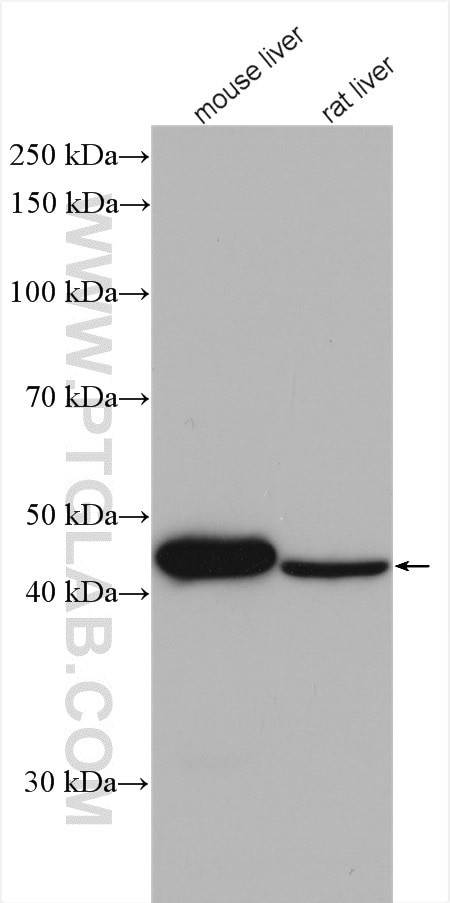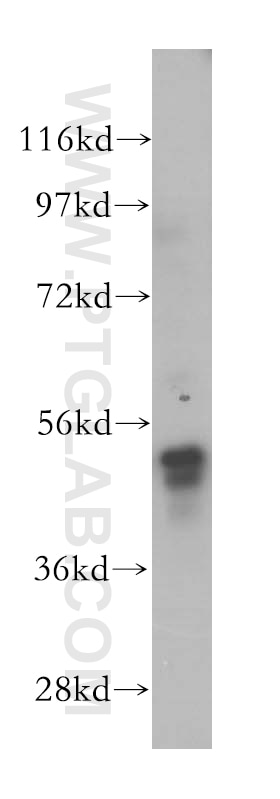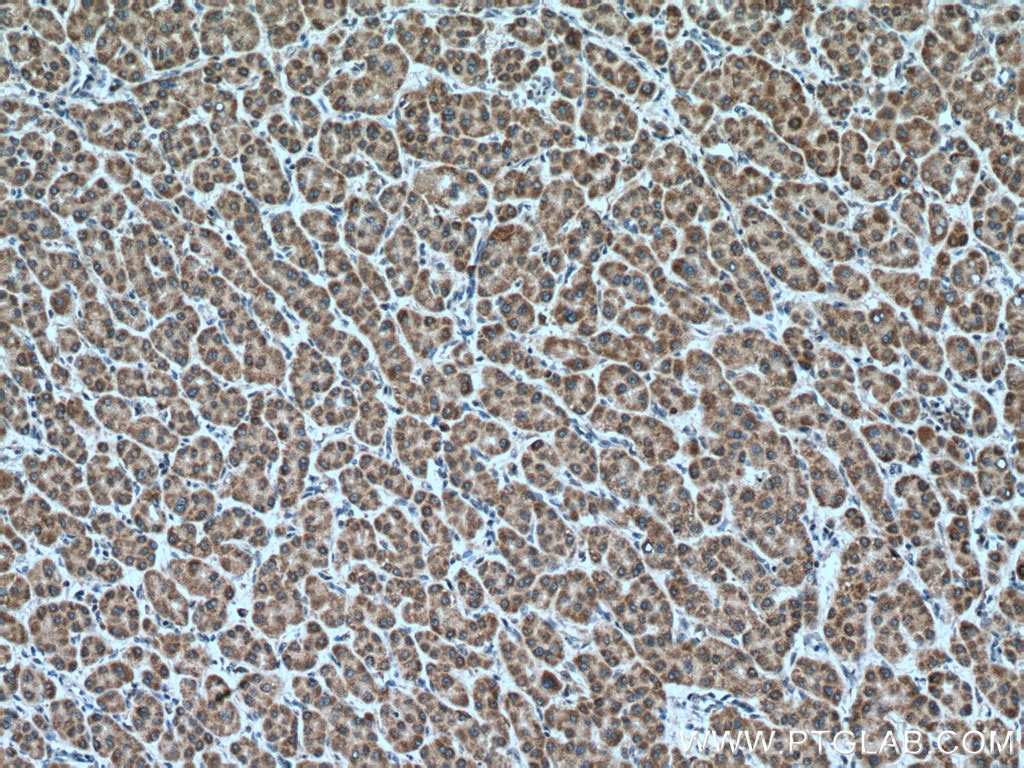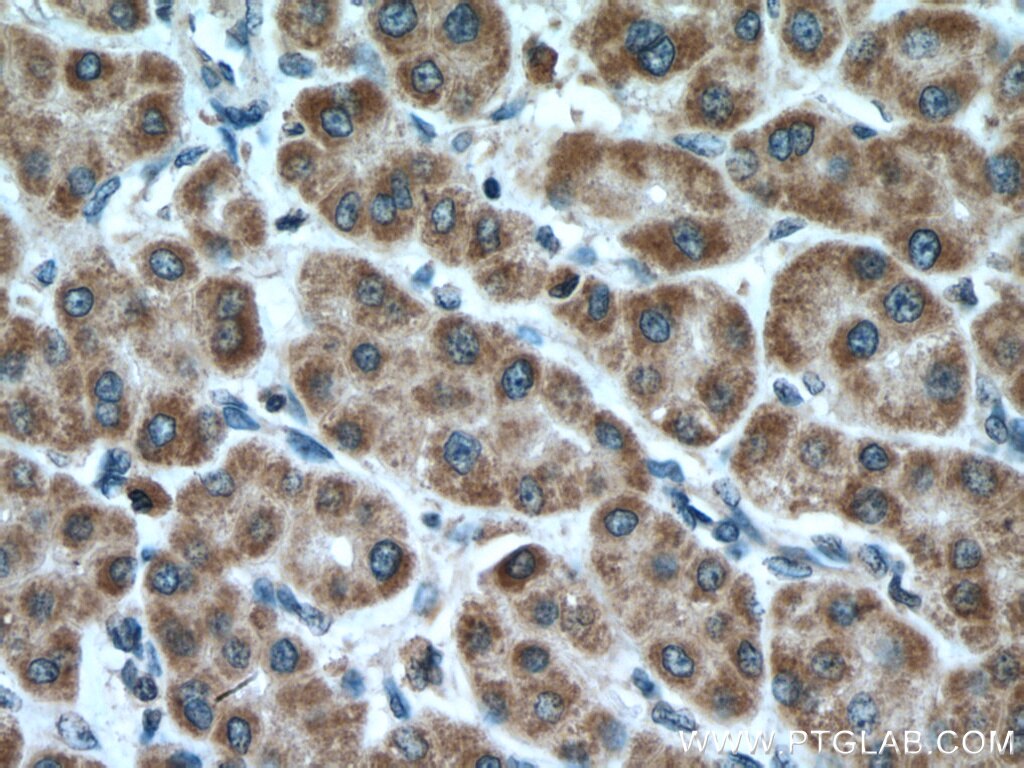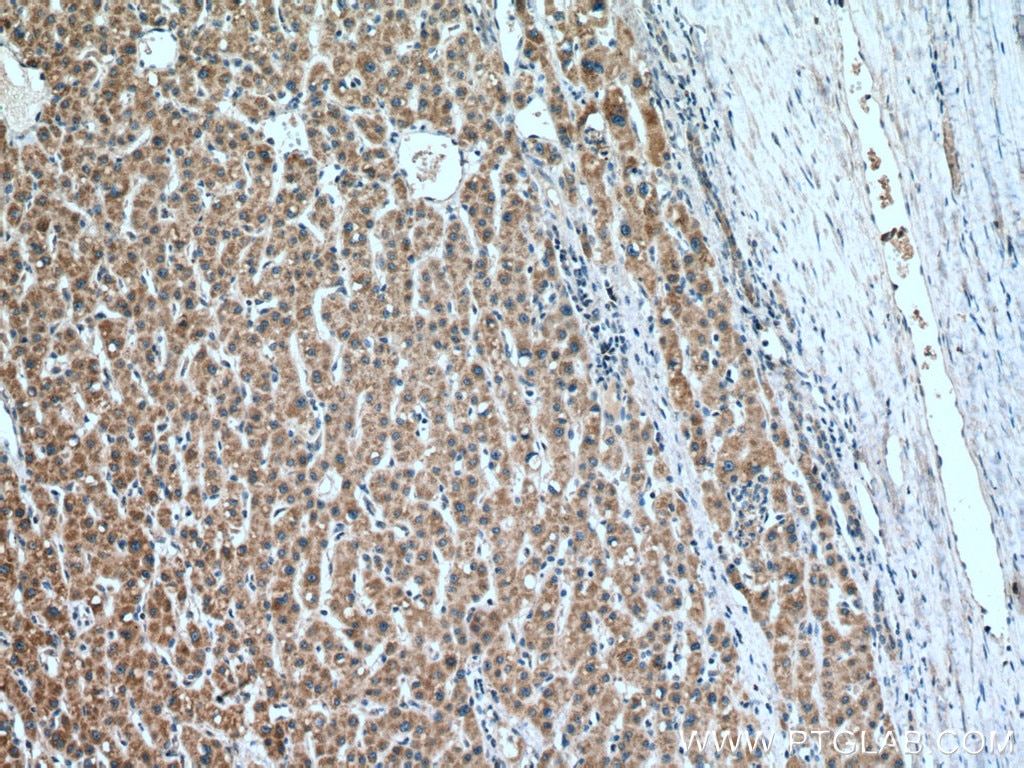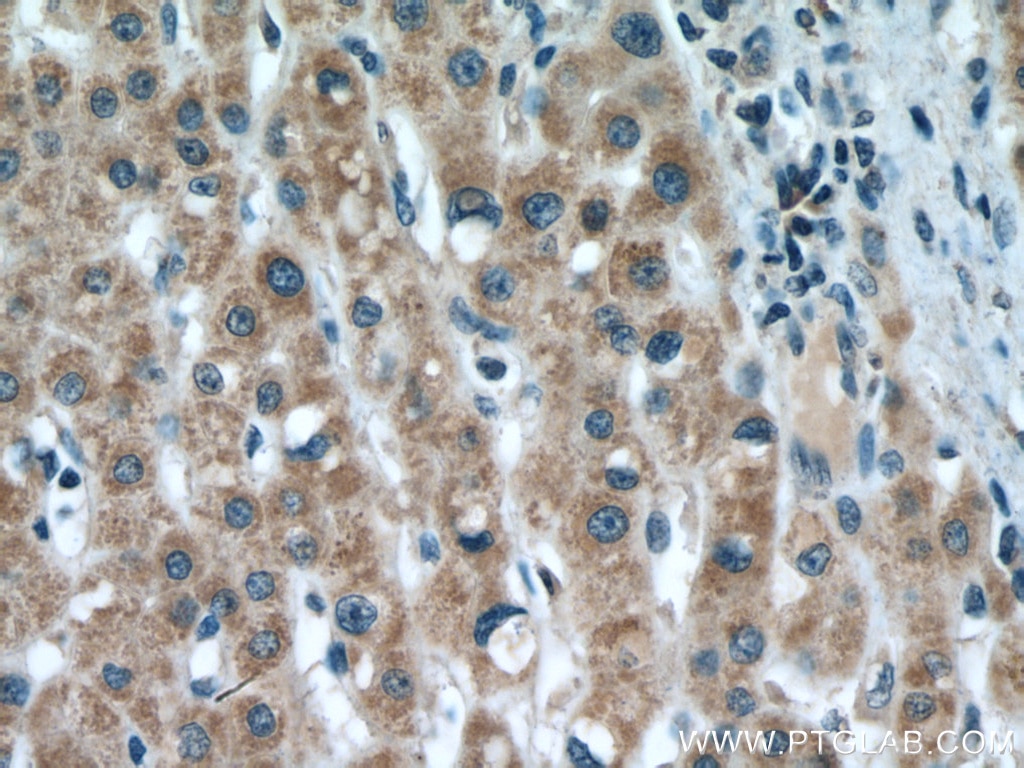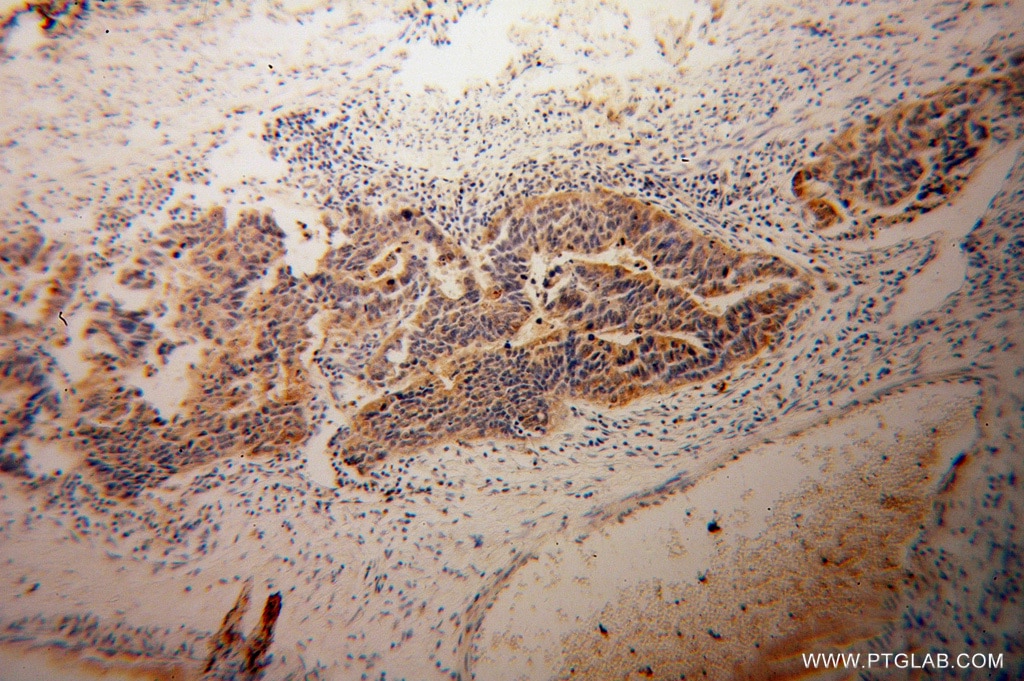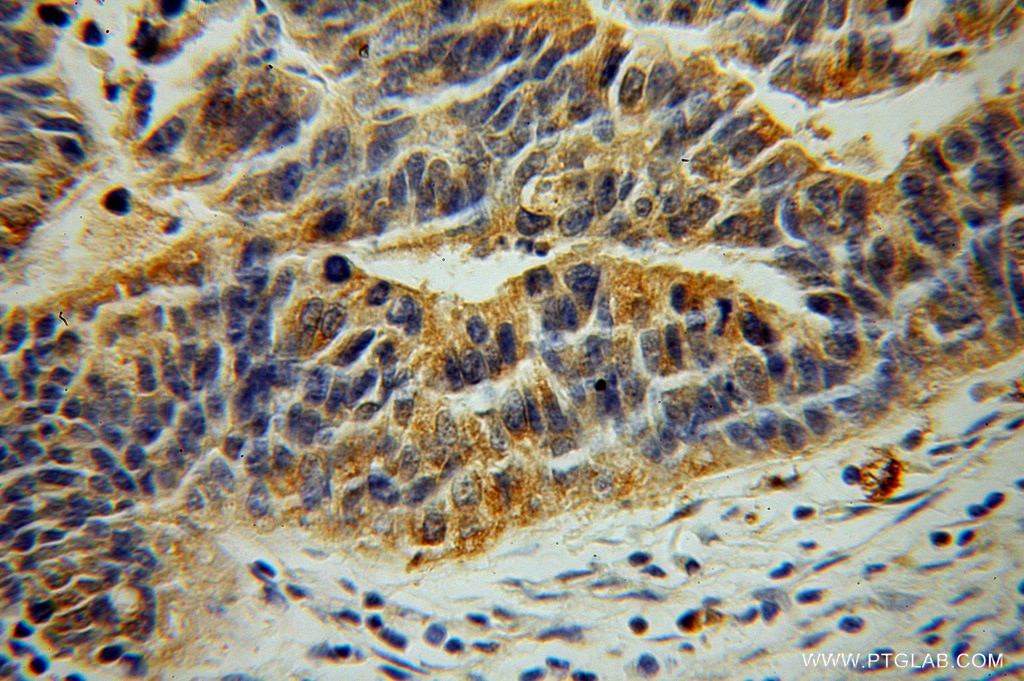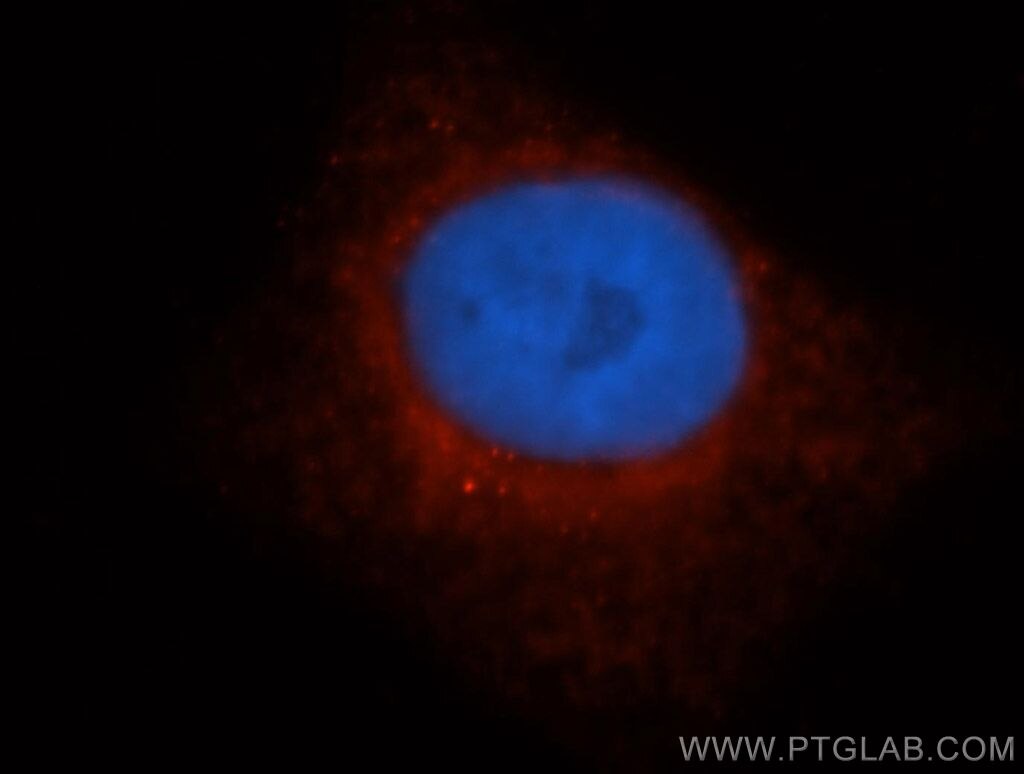Anticorps Polyclonal de lapin anti-LDHD
LDHD Polyclonal Antibody for WB, IHC, IF/ICC, ELISA
Hôte / Isotype
Lapin / IgG
Réactivité testée
Humain, rat, souris
Applications
WB, IHC, IF/ICC, IP, ELISA
Conjugaison
Non conjugué
N° de cat : 14398-1-AP
Synonymes
Galerie de données de validation
Applications testées
| Résultats positifs en WB | tissu hépatique de souris, cellules HepG2, tissu hépatique de rat |
| Résultats positifs en IHC | tissu de cancer du foie humain, tissu d'ostéosarcome humain il est suggéré de démasquer l'antigène avec un tampon de TE buffer pH 9.0; (*) À défaut, 'le démasquage de l'antigène peut être 'effectué avec un tampon citrate pH 6,0. |
| Résultats positifs en IF/ICC | cellules HepG2 |
Dilution recommandée
| Application | Dilution |
|---|---|
| Western Blot (WB) | WB : 1:1000-1:4000 |
| Immunohistochimie (IHC) | IHC : 1:50-1:500 |
| Immunofluorescence (IF)/ICC | IF/ICC : 1:20-1:200 |
| It is recommended that this reagent should be titrated in each testing system to obtain optimal results. | |
| Sample-dependent, check data in validation data gallery | |
Applications publiées
| WB | See 1 publications below |
| IHC | See 2 publications below |
| IF | See 1 publications below |
| IP | See 1 publications below |
Informations sur le produit
14398-1-AP cible LDHD dans les applications de WB, IHC, IF/ICC, IP, ELISA et montre une réactivité avec des échantillons Humain, rat, souris
| Réactivité | Humain, rat, souris |
| Réactivité citée | Humain |
| Hôte / Isotype | Lapin / IgG |
| Clonalité | Polyclonal |
| Type | Anticorps |
| Immunogène | LDHD Protéine recombinante Ag5897 |
| Nom complet | lactate dehydrogenase D |
| Masse moléculaire calculée | 52 kDa |
| Poids moléculaire observé | 45-54 kDa |
| Numéro d’acquisition GenBank | BC047902 |
| Symbole du gène | LDHD |
| Identification du gène (NCBI) | 197257 |
| Conjugaison | Non conjugué |
| Forme | Liquide |
| Méthode de purification | Purification par affinité contre l'antigène |
| Tampon de stockage | PBS with 0.02% sodium azide and 50% glycerol |
| Conditions de stockage | Stocker à -20°C. Stable pendant un an après l'expédition. L'aliquotage n'est pas nécessaire pour le stockage à -20oC Les 20ul contiennent 0,1% de BSA. |
Informations générales
Two naturally occurring forms of lactate dehydrogenase with similar but unique substrate specificities have been isolated in lower organisms including invertebrates, fungi, and prokaryotes. These dehydrogenase enzymes are L-lactate dehydrogenase and D-lactate dehydrogenase (LDHD) that are specific to the L and D isomers of lactate, respectively (PMID: 12127981). In lactic acid bacteria, LDHD plays a key role in anaerobic energy metabolism (PMID: 497162). Despite the identification of D-lactate and other D-2-hydroxyacids in prokaryotes, and the obvious connections and similarities to vertebrate metabolic pathways, very few mammalian D-2-hydroxyacid dehydrogenases have been found. LDHD has 2 isoforms with the molecular weight of 52 and 54kDa, and can be detected as 45-54 kDa.
Protocole
| Product Specific Protocols | |
|---|---|
| WB protocol for LDHD antibody 14398-1-AP | Download protocol |
| IHC protocol for LDHD antibody 14398-1-AP | Download protocol |
| IF protocol for LDHD antibody 14398-1-AP | Download protocol |
| Standard Protocols | |
|---|---|
| Click here to view our Standard Protocols |
Publications
| Species | Application | Title |
|---|---|---|
BMC Cancer Lactate dehydrogenase D serves as a novel biomarker for prognosis and immune infiltration in lung adenocarcinoma | ||
Signal Transduct Target Ther CDK7-YAP-LDHD axis promotes D-lactate elimination and ferroptosis defense to support cancer stem cell-like properties |
